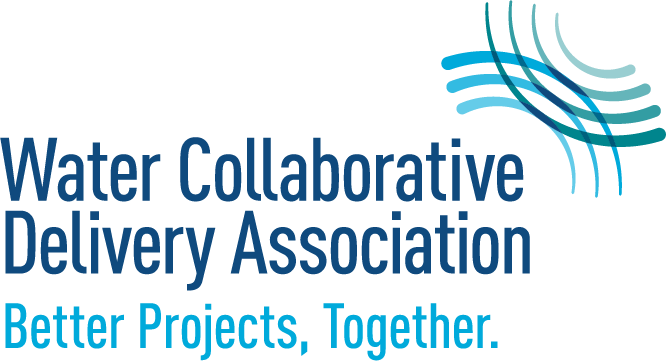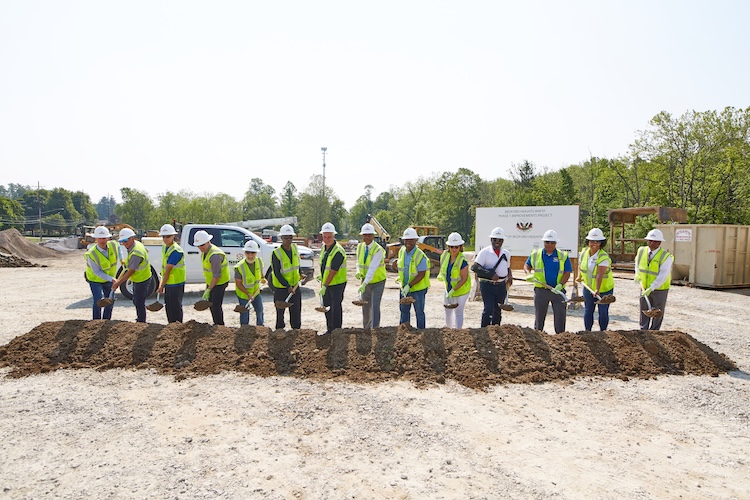Shook Construction’s Great Lakes region had been eagerly waiting for collaborative delivery projects to hit the municipal water and wastewater construction industry in northeast Ohio. With our headquarters in Dayton, OH, we saw our teammates in southern Ohio having great success with opportunities in progressive design-build and construction management at-risk, and it was clear that owners preferred these delivery methods over the traditional design-bid-build method that was dominating the northern part of the state.
The tide started to turn in early 2023 when Shook Construction was selected as the construction manager at-risk (CMAR) for a $51 million wastewater treatment plant (WWTP) improvement project for the City of Bedford Heights in northeast Ohio. It was not long into the project that our Great Lakes regional team realized we were part of a “Krash” course in the benefits of CMAR delivery.
A Dilemma Surrounding the Project Site
The City of Bedford Heights had to acquire new property to construct the primary treatment facilities for the project. The original property designated for this portion of the project was acquired early in the design process. A second, more desirable parcel—which became known as “the Krash property” —had also been targeted. While the Krash property is immediately adjacent to the original parcel, negotiations to acquire it had been much more challenging. As design developed to 30% complete and Shook Construction joined the team as the CMAR, discussions surrounding the Krash property gained momentum. Thanks to the flexibility of the CMAR model, the project owner was able to identify, evaluate, and validate the additional property acquisition without significant disruption to project progress. In a traditional design-bid-build model, the property evaluation would have delayed posting the job to bid, creating a longer overall timeline for the project.
How Collaborative Delivery Provided a Better Option
The City preferred the Krash property because it is located directly across from the existing wastewater treatment plant and provides more space to optimize the layout of the new facilities for operational efficiency. As project design continued, the project engineer of record, Hazen and Sawyer, developed conceptual designs for the Krash property to show what the project might look like and demonstrate efficiencies. At the same time, Shook Construction provided budgeting for the Krash property design and identified key construction cost savings that helped justify the City’s pursuit of acquiring the property.
Because the Krash property is directly across from the existing WWTP, utility connections to the current plant are much closer, resulting in construction cost savings. In addition, the Krash property sits at a lower elevation than the originally selected parcel. The change in elevation meant an engineered excavation support system was no longer needed and could be eliminated. Not only did this lead to substantial construction cost savings, but it also significantly reduced the critical path duration of the project. Lastly, the Krash property project design provided more space for site logistics during construction, further reducing costs.
Creating Value for Clients Early in the Process
Using CMAR delivery, a project owner has access to a contractor’s expertise and services much earlier in the design phase. In this case, the project owner used real construction cost estimates, and means and methods, to demonstrate the savings associated with the Krash property, thus justifying the negotiations to purchase it. By having a CMAR partner involved early in the design phase, construction budgeting information was available when weighing the benefits of the Krash property and the decision to go with the site didn’t delay design completion and start of construction. These key drivers, which resulted in the City of Bedford Heights obtaining the Krash property for the project, would not have been feasible in a traditional design-bid-build approach.
As it turns out for the northeast Ohio municipal water market, the wait for collaborative delivery has been well worth it. This “Krash” course example is one of many to demonstrate the benefits of collaborative delivery, and our teams are embracing it.

